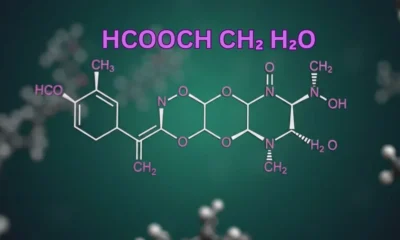AI
Parallel Artificial Intelligence: Revolutionizing Speed, Efficiency, and Scalability in AI Systems

Artificial Intelligence is transforming the world. But as AI grows, so does the need for speed. Traditional AI struggles with large-scale computations. Enter Parallel Artificial Intelligence. This game-changer spreads complex tasks across multiple processors, slashing processing time. Think of it like a kitchen. One chef makes a meal slowly. A team? They finish fast. That’s Parallel AI—breaking tasks into smaller chunks, working together. Industries need it. Healthcare, finance, autonomous vehicles—everywhere speed matters. The demand for real-time AI solutions is rising. Parallel AI meets that demand. It’s the future of AI scalability and efficiency. And it’s happening now.
What is Parallel Artificial Intelligence?
Parallel Artificial Intelligence is AI steroids. Rather than processing step for step, it processes several operations at once. It’s a lot of brains working on one problem at a time. The old AI processed sequentially, taking one task at a time. But actual-world AI applications—autonomous cars, big data analysis—require quick responses. Parallel AI chops up tasks and spreads them among several computing units. This accelerates learning, improves efficiency, and enables AI to process gigantic datasets with ease. It’s a business revolutionizer, research booster, and AI engineer facilitator. As more AI is applied, Parallel AI is no longer a want—it’s a need.
The Evolution of Parallel AI
The history of Parallel Artificial Intelligence is intriguing. It began as a mere concept: why not employ multiple processors rather than one? Parallel computing was only a fantasy in the 1950s. Single-core systems were used for early AI models. Slow and inefficient. Then came multi-core processors. GPUs transformed AI training. Today, we have TPUs, cloud computing, and even quantum AI on the horizon. Each advance makes Parallel AI stronger. Firms such as Google and Nvidia are pushing the limits, making AI quicker than ever. The revolution is not yet complete. The next wave? AI supercomputing, where computers think at lightning speed.
How Parallel Computing Works in AI
Parallel computing is similar to teamwork. Rather than have one person do everything, several people do part of it. Parallel Artificial Intelligence is the same. It breaks difficult problems up into parts, which are solved at once. There are two big methods: data parallelism and task parallelism. Data parallelism breaks down large data sets into several processors, ideal for deep learning. Task parallelism distributes different tasks into different processors, ideal for workflow optimization. GPUs, TPUs, and cloud clusters drive these computations, which make AI models smarter, faster. The outcome? AI which learns fast, responds in real-time, and manages enormous workloads with ease.
Benefits of Parallel AI
Speed. Efficiency. Scalability. These are the pillars of Parallel Artificial Intelligence. Traditional AI models take weeks to train. Parallel AI slashes that time. It processes data in real-time, crucial for industries like finance and healthcare. Handling big data? No problem. Parallel AI scales effortlessly, managing massive datasets without bottlenecks. Real-time decision-making becomes seamless. Imagine self-driving cars reacting instantly or fraud detection systems catching threats before they happen. That’s Parallel AI in action. The world demands faster AI. Parallel AI delivers. It’s not just an upgrade—it’s a necessity for modern AI applications.
Applications of Parallel AI in Different Industries
Parallel Artificial Intelligence is everywhere. In healthcare, it analyzes medical images instantly, diagnosing diseases faster. In finance, it powers algorithmic trading, processing thousands of transactions per second. Autonomous vehicles? They rely on Parallel AI for real-time navigation. Even gaming benefits, with AI-driven NPC behavior adapting dynamically. Big data analytics, cybersecurity, robotics—the list goes on. Businesses adopting Parallel AI stay ahead, making smarter, faster decisions. Without it, industries lag. With it, they innovate. Every second counts in AI. Parallel AI ensures industries don’t just keep up—they lead.
Parallel AI in Deep Learning and Neural Networks
Deep learning thrives on Parallel Artificial Intelligence. Why? Because training neural networks is computationally heavy. Traditional AI models take days, sometimes weeks, to train. Parallel AI speeds up this process. It distributes computations across GPUs and TPUs, making learning faster and more efficient. Neural networks, with millions of parameters, require extensive processing power. Parallel AI handles it effortlessly. Cloud computing further boosts performance, allowing models to train on distributed servers worldwide. The result? Smarter AI, faster breakthroughs, and real-time learning. Parallel AI isn’t optional for deep learning—it’s the backbone.

Challenges and Limitations of Parallel AI
Nothing’s perfect. Parallel Artificial Intelligence faces hurdles. Hardware costs? High. Not every business can afford multi-GPU setups. Power consumption? Massive. Energy efficiency is a concern. Programming complexity? It’s tough. Parallelizing AI algorithms requires expertise. Synchronization issues? They happen. When multiple processors work together, timing matters. Latency can disrupt efficiency. Despite challenges, research continues. New frameworks, optimized hardware, and improved algorithms are making Parallel AI more accessible. The benefits far outweigh the drawbacks. But to maximize its potential, businesses must invest wisely, balancing power with cost-effectiveness.
Key Technologies Driving Parallel AI
Parallel Artificial Intelligence wouldn’t exist without cutting-edge tech. GPUs revolutionized AI. TPUs took it further, accelerating deep learning. Cloud computing enables distributed AI models, scaling globally. Edge AI brings Parallel AI to smart devices, reducing reliance on centralized servers. Quantum computing? It’s the next frontier, promising speeds beyond imagination. Companies like Google, Nvidia, and IBM drive these advancements, making AI more powerful. Without these technologies, Parallel AI wouldn’t thrive. As hardware evolves, Parallel AI will reach new heights, making real-time intelligence the norm, not the exception.
Future Trends in Parallel AI
What’s next for Parallel Artificial Intelligence? AI supercomputing. Imagine machines processing trillions of calculations in seconds. Quantum AI will push boundaries, making today’s AI seem slow. Automation will increase, reducing human intervention. Ethical AI will become a focus—fair, transparent, and unbiased. AI’s role in cybersecurity, space exploration, and climate modeling will expand. Governments and businesses will invest more, making Parallel AI mainstream. The AI race is accelerating. Those who adopt Parallel AI early? They’ll shape the future. The next decade will redefine intelligence as we know it.
How to Get Started with Parallel AI Development
Curious about Parallel Artificial Intelligence? Start with the right tools. TensorFlow and PyTorch support parallel processing. OpenMP and MPI optimize AI workflows. Programming languages like Python, CUDA, and Julia are essential. Want hands-on learning? Online courses from Coursera, Udacity, and edX offer deep insights. Experiment with cloud-based GPUs from AWS, Google Cloud, or Azure. Join AI forums, read research papers, stay updated. Parallel AI is complex but rewarding. Dive in, learn, and build the future. The AI revolution isn’t coming. It’s already here.
Conclusion
Parallel Artificial Intelligence isn’t just an innovation—it’s a necessity. AI is growing, and without parallel computing, it slows down. Industries rely on it for real-time insights, automation, and scalability. The future? Faster, smarter, more efficient AI. Companies adopting Parallel AI lead the race. Those who ignore it? They fall behind. As technology advances, Parallel AI will drive new possibilities. It’s shaping the next era of artificial intelligence. Ready or not, the AI revolution is here. The question is—are you part of it?
-

 BIOGRAPHY7 months ago
BIOGRAPHY7 months agoBehind the Scenes with Sandra Orlow: An Exclusive Interview
-

 HOME1 year ago
HOME1 year agoDiscovering Insights: A Deep Dive into the //vital-mag.net blog
-

 HOME1 year ago
HOME1 year agoSifangds in Action: Real-Life Applications and Success Stories
-

 BIOGRAPHY1 year ago
BIOGRAPHY1 year agoThe Woman Behind the Comedian: Meet Andrew Santino Wife




























